HTML
--> --> -->Driven by the demands of disposal of nuclear waste and the design of accelerator driven subcritical system (ADS), systematic experimental measurements of spallation reactions have been performed at the FRagment Separator (FRS), GSI, Darmstadt, which cover a broad range of incident energies (from 200 MeV/u to 1500 MeV/u) and spallation nuclei from 56Fe to 238U. At Lawrence Berkeley Laboratory (LBL), the spallation reactions of relatively small systems, 36, 40Ar and 40Ca were measured [8, 9]. Besides many experimental studies, different theoretical models have been developed for nuclear spallation reactions, in which the prediction of fragment production is of great interest. The traditional methods deal with the spallation reaction as a two-stage processes, in which the first (fast) stage is described by quasi-free nucleon-nucleon collisions and intranuclear cascades, and the second stage by de-excitation or fission of the excited compound nuclei. A number of codes have been developed to treat the first stage, for example, ISABEL [10], INCL++ [11–13] and the CRISP code [14]. Models based on microscopic quantum molecular dynamics have also been developed [15–19], which usually combine statistical de-excitation simulations with the binary decay code GEMINI [20], or the evaporation-fission code ABRA07 [21]. To deal with the compound nucleus formed at low energies, or its evolution through multi-fragmentation at high energies, the statistical multi-fragmentation model (SMM) has been adopted in Refs. [22–24]. Methods based on empirical parametrizations have also been proposed, for example, the SPACS parametrization [25], and the semi-empirical parametrizations by Silberberg and Tsao [26], Webber et al. [27], Waddington et al. [28], or by using the empirical formula based on the scaling phenomena in spallation reactions [29]. Difficulties still exist in predicting the yields of residue fragments because spallation reactions occur in a wide range of incident energies and incident species, from medium nuclei to heavy nuclei. Furthermore, the residue fragments are distributed over a large range of mass and charge numbers.
Neural network methods are a powerful tool for predicting behavior because they have a strong ability to learn from known data. They have been widely used in various areas, such as pattern recognition and machine learning [30, 31]. Neural network methods have also been used in nuclear physics, for example for prediction of nuclear masses [32, 33], nuclear charge radii [34], nuclear
$ p(w/D) = p(D/w)p(w)/p(D), $  | (1) |
$ \chi^{2} = \sum\limits_{n = 1}^{N}\left(\frac{t_{n}-S(x,w)}{\Delta{t_{n}}}\right)^{2}, $  | (2) |
$ S(x,w) = a+\sum\limits_{j = 1}^{H}b_j {\rm tanh}\bigg\{c_j+\sum\limits_{i = 1}^{I} d_{ji} x_i \bigg\}, $  | (3) |
 Figure1. (color online) A schematic diagram of a neural network with a single hidden layer, three hidden neurons (H = 3) and two input variables (I = 2).
Figure1. (color online) A schematic diagram of a neural network with a single hidden layer, three hidden neurons (H = 3) and two input variables (I = 2).In this work, for the case of spallation reactions
$ B_p = [(-1)^Z+(-1)^N]\cdot A^{-1/2}. $  | (4) |
$ \langle S^{\rm new}\rangle = \int S(x,w)p(w/D) = \frac{1}{K} \sum\limits_{k = 1}^{K}S(x^{\rm new},w_k). $  | (5) |
  | E/(MeV/u) | Numbers | Charge Range | Reference |
| 36Ar + p | 361 | 42 | 9-17 | [8] |
| 546 | 42 | 9-17 | ||
| 765 | 38 | 9-17 | ||
| 40Ar + p | 352 | 45 | 9-17 | [8] |
| 40Ca + p | 356 | 48 | 10-20 | [9] |
| 565 | 54 | 10-20 | ||
| 763 | 54 | 10-20 | ||
| 56Fe + p | 300 | 128 | 10-27 | [41] |
| 500 | 136 | 10-27 | ||
| 750 | 148 | 8-27 | ||
| 1000 | 152 | 8-26 | ||
| 1500 | 157 | 8-27 | ||
| 136Xe + p | 200 | 96 | 48-55 | [42] |
| 500 | 271 | 41-56 | [43] | |
| 1000 | 604 | 3-56 | [44] | |
| 197Au + p | 800 | 352 | 60-80 | [45] |
| 208Pb + p | 500 | 249 | 69-83 | [46] |
| 1000 | 459 | 61-82 | [47] | |
| 238U + p | 1000 | 364 | 74-92 | [48] |
Table1.The number of measured fragments in 19 measured
  | E/(MeV/u) | Numbers | Charge Range |
| 103Rh + p | 800 | 40 | 36-41 |
| 150Nd + p | 700 | 333 | 40-60 |
| 169Tm + p | 600 | 239 | 53-69 |
| 181Ta + p | 800 | 375 | 55-74 |
| 208Pb+p | 600 | 179 | 76-82 |
Table2.The number of fragments in spallation reactions predicted using the SPACS parametrization.
The data for 23 reactions listed in Tables 1 and 2 were chosen as the learning set (LS), and the remaining ones as the testing set (TS) for the reliability of the BNN method. Two different data sets were selected as TS, i.e. TS1 for the 800 MeV/u 197Au + p reaction [45], TS2 for the 500 MeV/u 56Fe + p reaction [41]. Different number of hidden nodes, from 34 to 36, were used to find the optimal hidden nodes.
In Fig. 2 to Fig. 4, the BNN predictions are shown for 800 MeV/u 197Au + p with different hidden nodes H from 34 to 36. In the experiments, only the cross-sections for fragments with
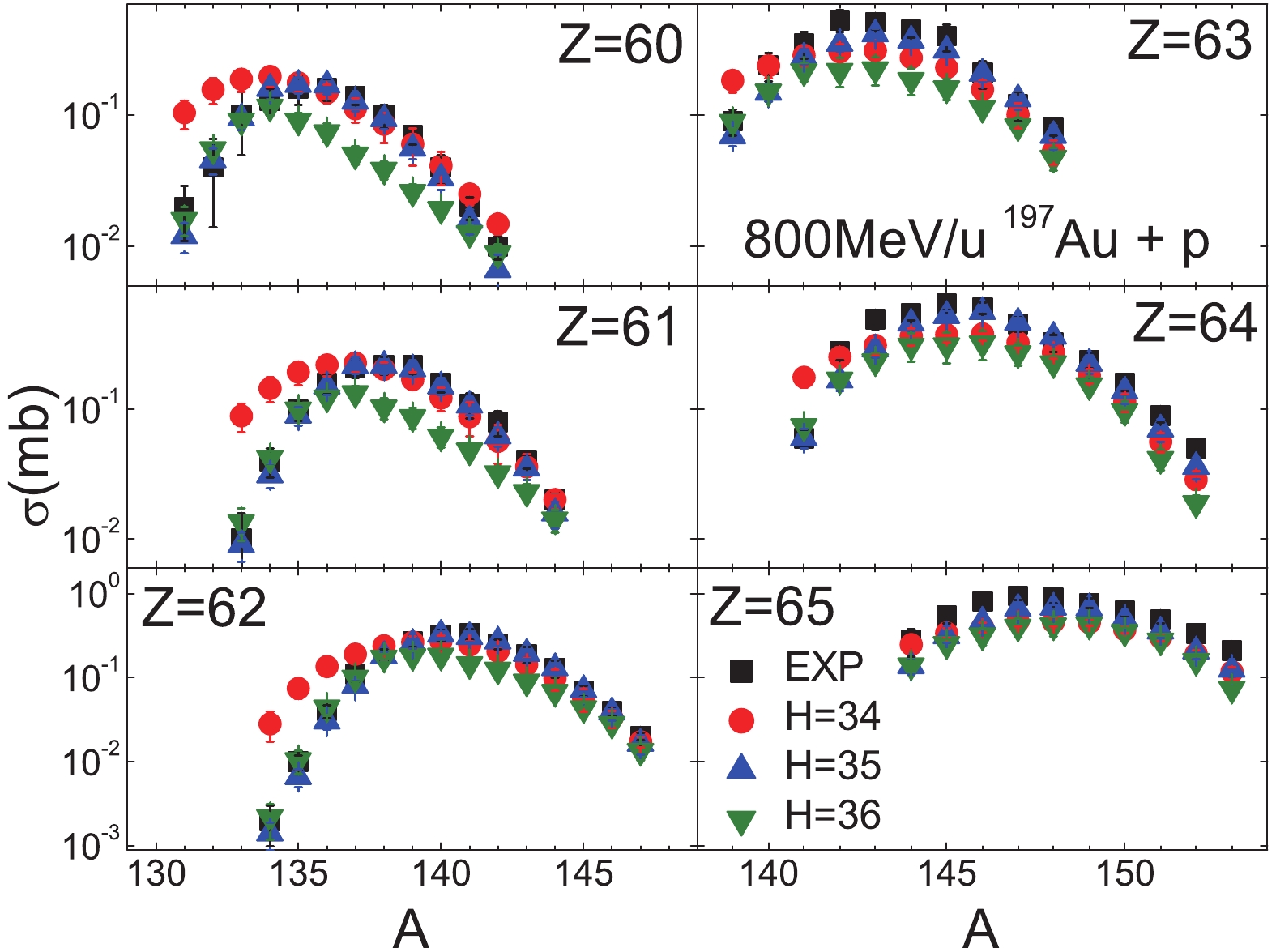 Figure2. (color online) BNN predictions for selected residue fragments with Z=60 to 65 in the 800 MeV/u 197Au + p spallation reaction. Three different numbers of hidden nodes are tested, H = 34 (circles), 35 (triangles), 36 (triangles). The measured results are shown as black squares.
Figure2. (color online) BNN predictions for selected residue fragments with Z=60 to 65 in the 800 MeV/u 197Au + p spallation reaction. Three different numbers of hidden nodes are tested, H = 34 (circles), 35 (triangles), 36 (triangles). The measured results are shown as black squares. Figure4. (color online) Similar as Fig. 2, but for Z=75 to 80.
Figure4. (color online) Similar as Fig. 2, but for Z=75 to 80.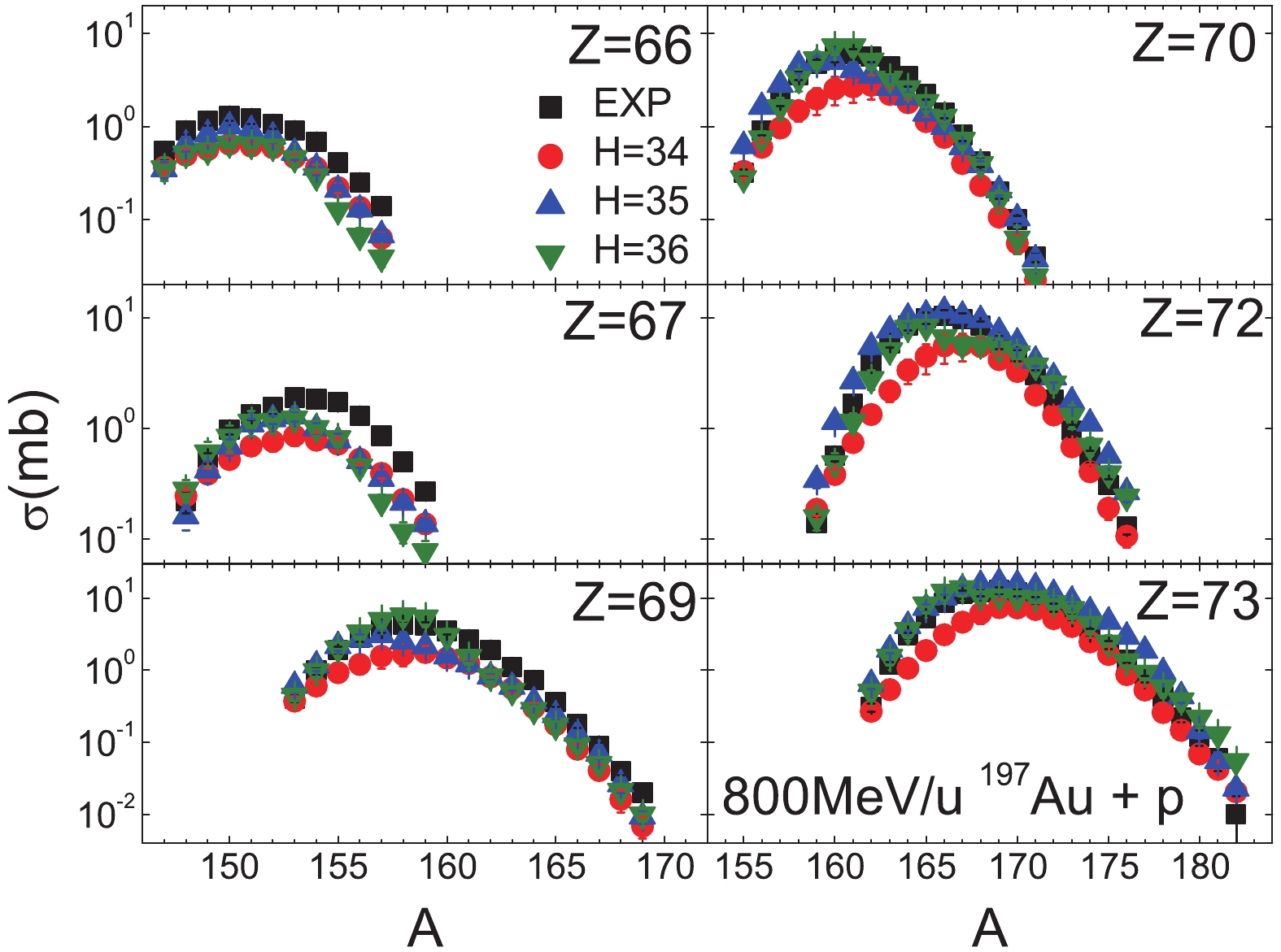 Figure3. (color online) Similar as Fig. 2, but for Z=66 to 73.
Figure3. (color online) Similar as Fig. 2, but for Z=66 to 73.In Figs. 5 to 7, the BNN predictions for TS2 (500 MeV/u 56Fe + p ) with H = 34, 35 and 36 are seen to be in good agreement with the experimental data, except for
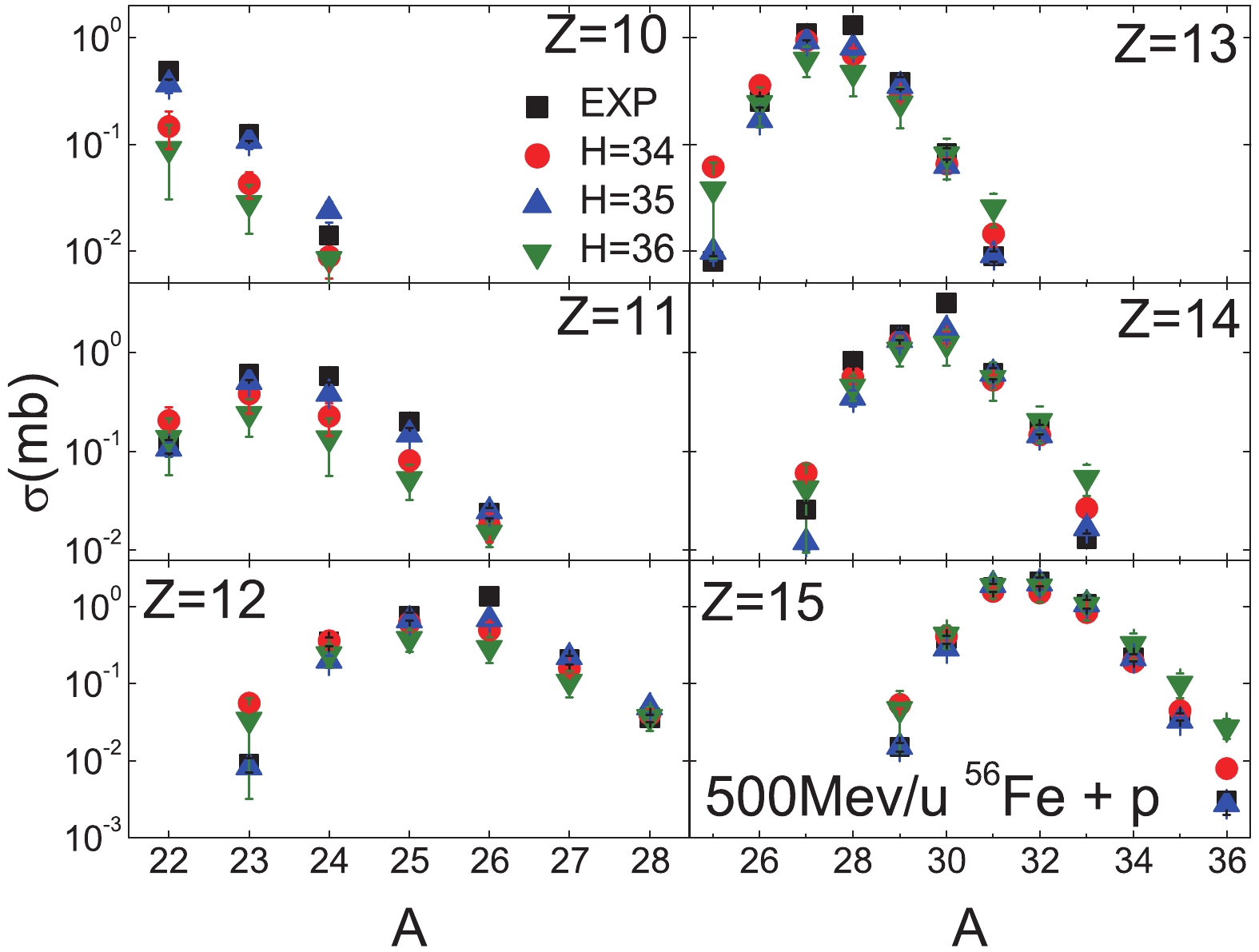 Figure5. (color online) BNN predictions for the 500 MeV/u 56Fe + p reaction with H = 34, 35 and 36. The results for the selected residues Z=10 to 15 are compared to the measured residue fragments [41]. The symbols are the same as in Fig. 2.
Figure5. (color online) BNN predictions for the 500 MeV/u 56Fe + p reaction with H = 34, 35 and 36. The results for the selected residues Z=10 to 15 are compared to the measured residue fragments [41]. The symbols are the same as in Fig. 2.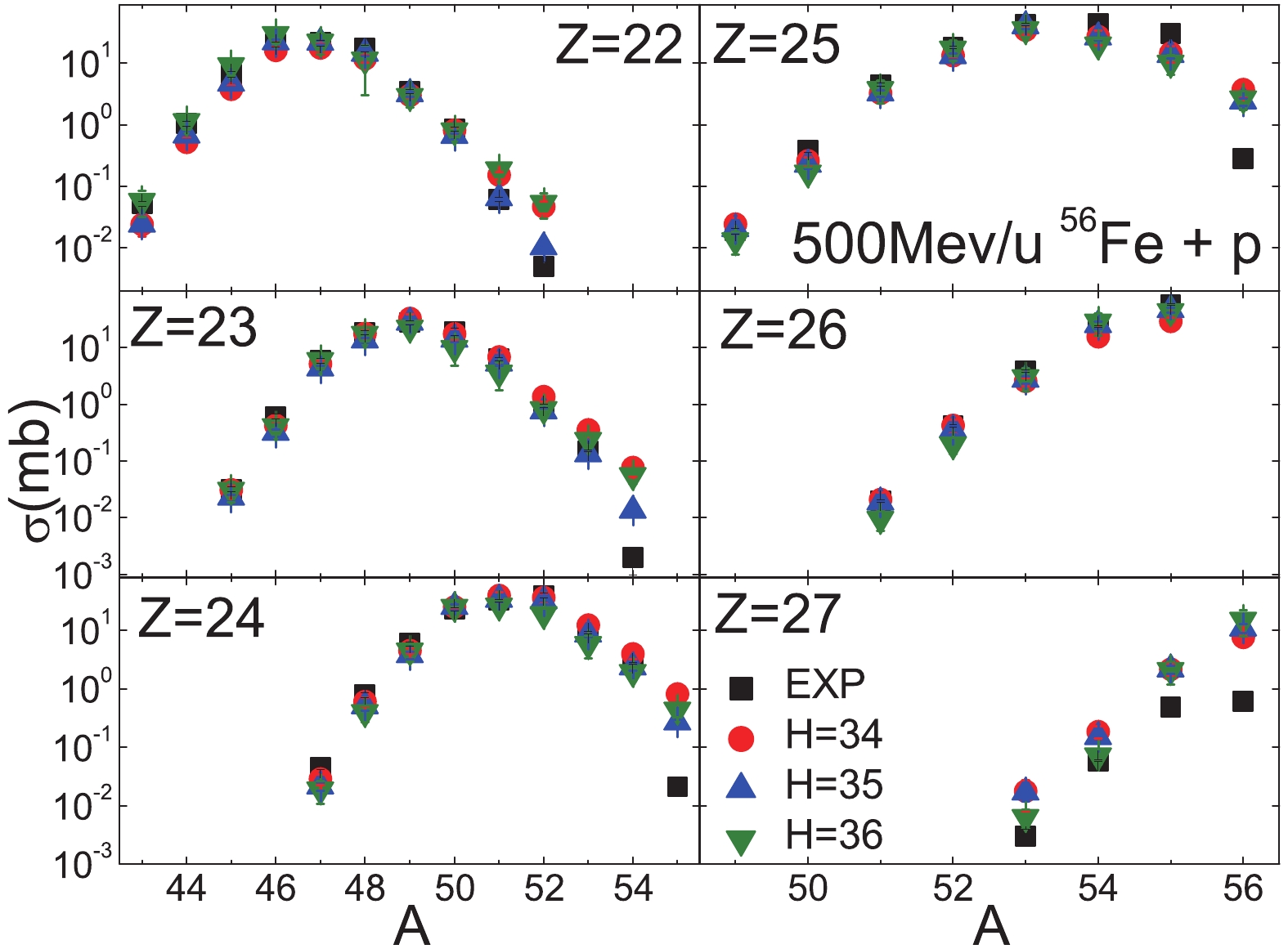 Figure7. (color online) Similar as Fig. 5, but for Z = 22 to 27.
Figure7. (color online) Similar as Fig. 5, but for Z = 22 to 27.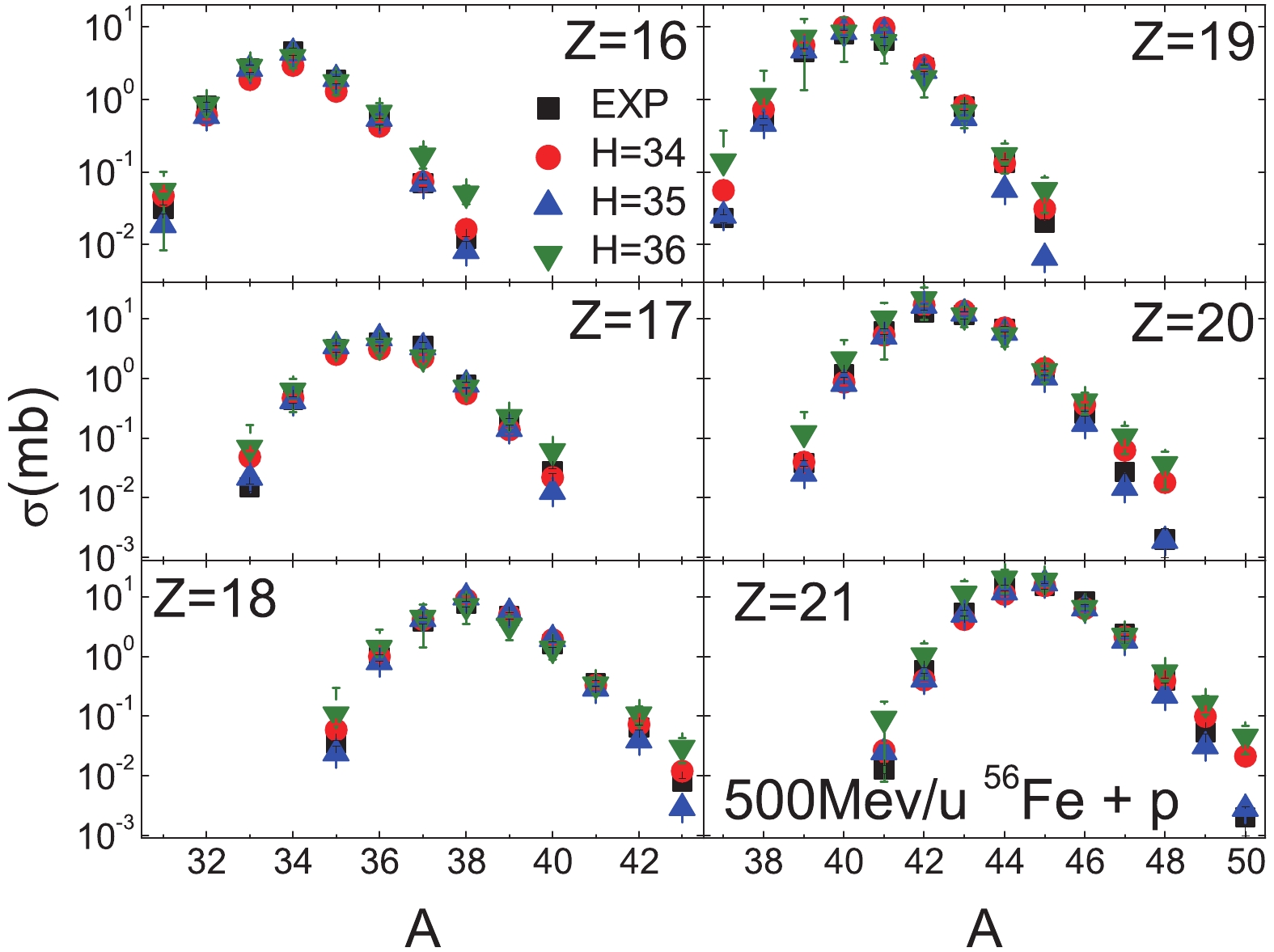 Figure6. (color online) Similar as Fig. 5, but for Z = 16 to 21.
Figure6. (color online) Similar as Fig. 5, but for Z = 16 to 21.Based on the above analysis of a relatively large spallation system, 197Au, and a medium one, 56Fe, the BNN method with H = 35 hidden nodes provides the best results, and is selected in this work as the optimal number of hidden nodes. The trained parameter sets with H = 35 and TS1 are used for predictions of the unknown fragment cross-sections in four reaction systems, 136Xe + p at 1000 MeV/u, 238U + p at 1000 MeV/u, 40Ca + p at 763 MeV/u, and 36Ar + p at 361 MeV/u. The predictions with the BNN method are also compared with the SPACS results and the experimental data, when available.
In Figs. 8 and 9, the results for the residue fragments in the 1000 MeV/u 136Xe + p spallation reaction are shown. The measured fragment cross-sections cover a wide range of charge numbers, from Z = 3 to Z = 56, but a limited isotope range. The BNN results are in good agreement with the experimental data for light to heavy isotopes, where the experimental data are available. The predictions of the SPACS parametrization for the light fragments are significantly lower, by about 4 (Z = 8) to 5 (Z = 3) orders of magnitude, for medium masses they are lower by about 2 (Z = 22) to 3 (Z = 17) orders of magnitude, but are in good agreement with the experimental data for heavy residues. There is a good agreement between BNN and SPACS for
 Figure8. (color online) BNN predictions (with TS1 and H = 35) (circles) for selected fragments with Z = 3 to 22 in the 1000 MeV/u 136Xe + p spallation reaction, compared to the experimental data (squares, from [44]) and the SPACS results (triangles, from [25]. The experimental and BNN error bars are smaller than the symbols.
Figure8. (color online) BNN predictions (with TS1 and H = 35) (circles) for selected fragments with Z = 3 to 22 in the 1000 MeV/u 136Xe + p spallation reaction, compared to the experimental data (squares, from [44]) and the SPACS results (triangles, from [25]. The experimental and BNN error bars are smaller than the symbols.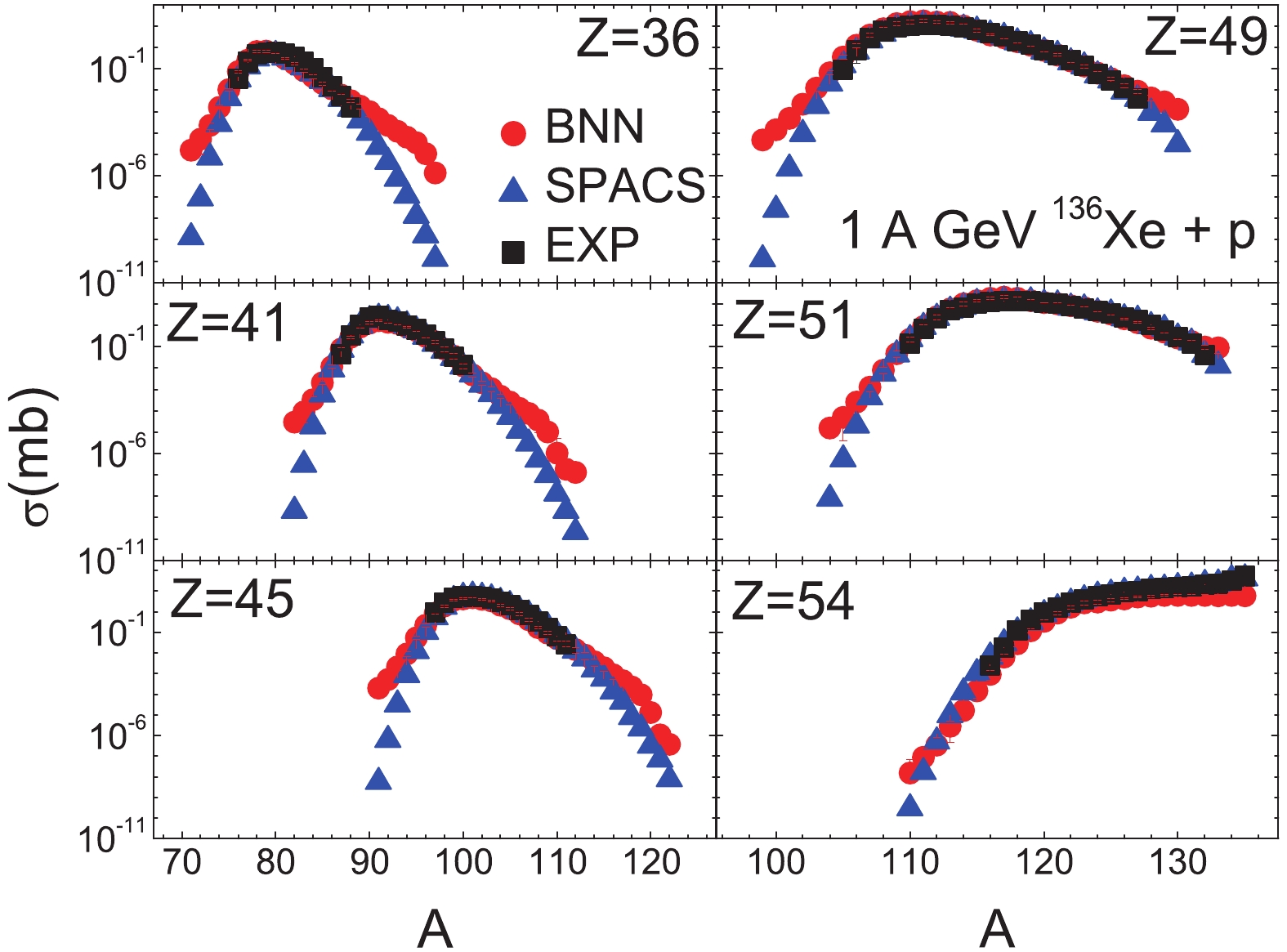 Figure9. (color online) Similar as Fig. 8, but for Z = 36 to 54.
Figure9. (color online) Similar as Fig. 8, but for Z = 36 to 54.In Figs. 10 and 11, the predicted isotopic cross-sections for the 1000 MeV/u 238U + p reaction are shown. In [48], only the isotopic cross-sections for the
 Figure10. (color online) Predictions of isotopic distributions by BNN (squares) and SPACS (circles) for the 1000 MeV/u 238U + p spallation reaction for Z = 54 to 70 [48]. Experimental distributions are not available for
Figure10. (color online) Predictions of isotopic distributions by BNN (squares) and SPACS (circles) for the 1000 MeV/u 238U + p spallation reaction for Z = 54 to 70 [48]. Experimental distributions are not available for 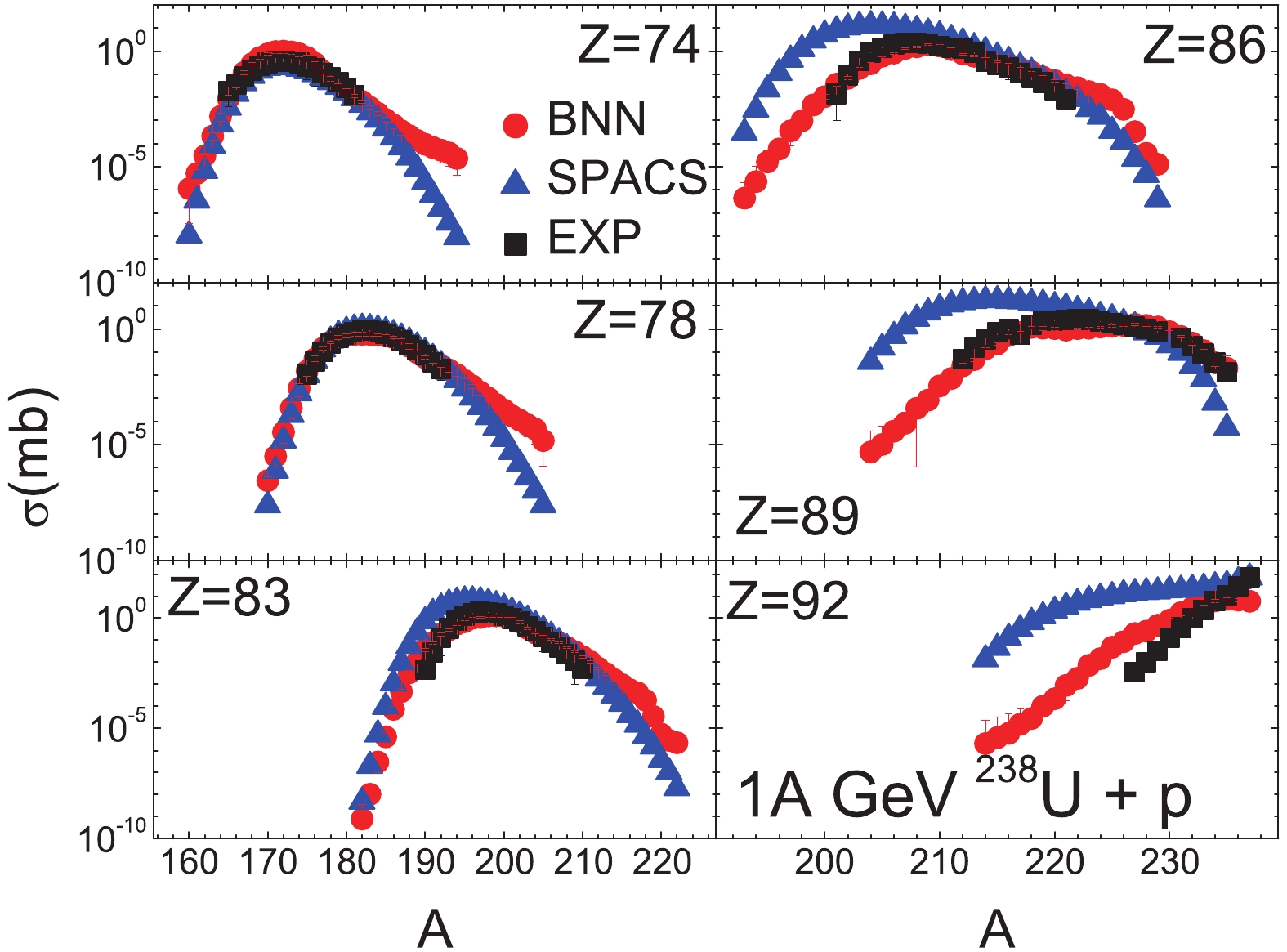 Figure11. (color online) Similar as Fig. 8, but for 1000 MeV/u 238U + p and for Z = 74 to 92.
Figure11. (color online) Similar as Fig. 8, but for 1000 MeV/u 238U + p and for Z = 74 to 92.In Fig. 12, the isotopic cross-sections for the 763 MeV/u 40Ca + p reaction are shown. Compared to the measured cross-sections, BNN and SPACS reproduce the experimental data well. For the very neutron-rich fragments with no measured data available, the BNN and SPACS predictions show a large difference. As mentioned above, this difference is due to the lack of data for neutron-rich isotope cross-sections in the BNN method .
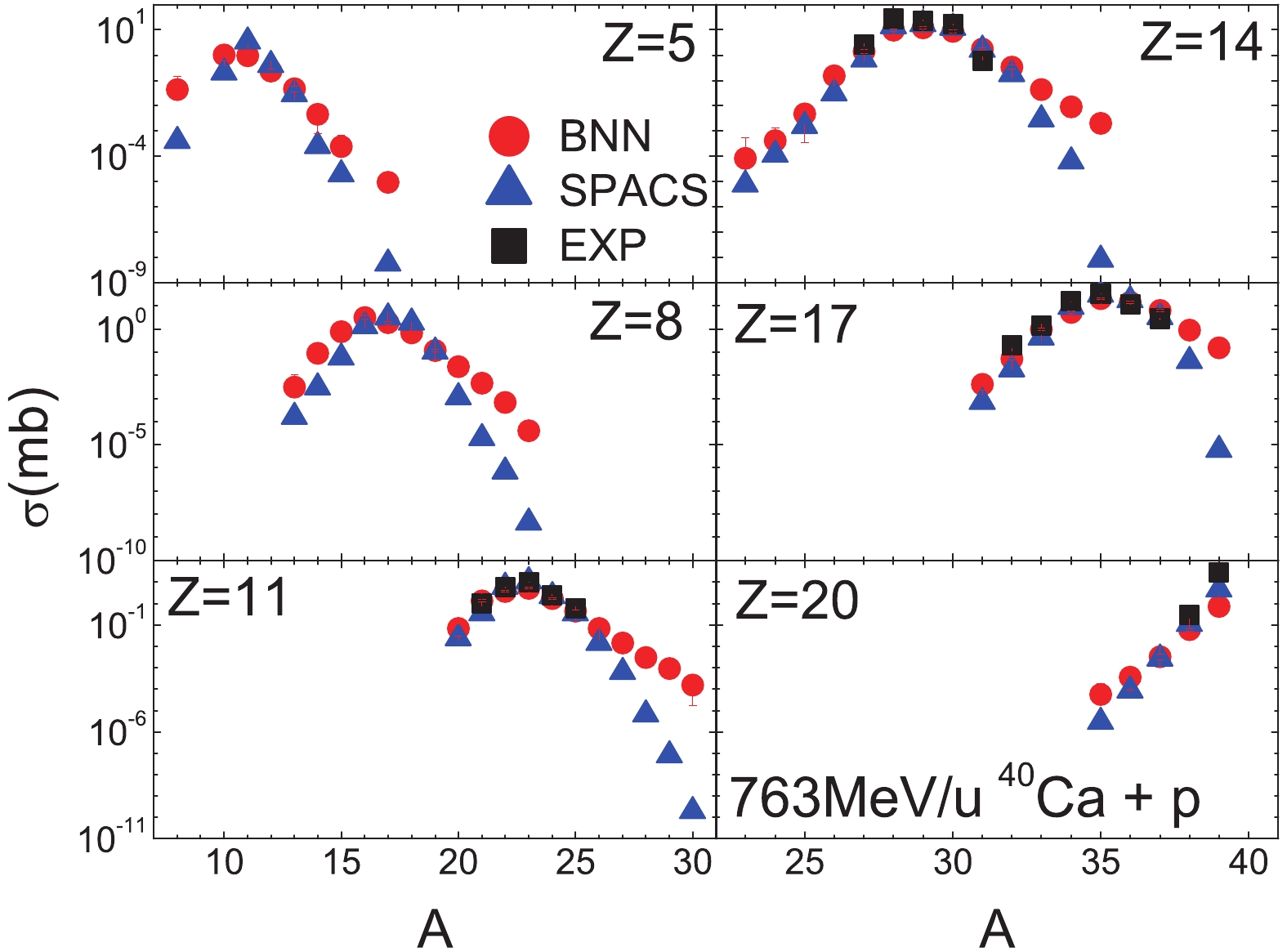 Figure12. (color online) Similar as Fig. 8, but for the 763 MeV/u 40Ca + p spallation reaction [9]. Experimental data are not available for fragments with
Figure12. (color online) Similar as Fig. 8, but for the 763 MeV/u 40Ca + p spallation reaction [9]. Experimental data are not available for fragments with In Fig. 13, the isotopic cross-sections for the 361 MeV/u 36Ar + p reaction are shown. 36Ar is the smallest projectile in the training data. A similar result as for the 763 MeV/u 40Ca + p reaction is seen, that is both the BNN and SPACS methods reproduce the measured data well, whereas for very neutron-rich fragments the BNN predictions are slightly larger than the SPACS results.
 Figure13. (color online) Similar as Fig. 8, but for the 361 MeV/u 36Ar + p reaction with Z = 3 to 17 [8].
Figure13. (color online) Similar as Fig. 8, but for the 361 MeV/u 36Ar + p reaction with Z = 3 to 17 [8].From the BNN predictions for the 36Ar, 40Ca, 136Xe, and 238U spallation reactions, it may be concluded that the BNN method provides good predictions for the cross-sections of fragments, except for those that are far from the measured data. Additional experimental measurements should reduce the effect of the prior distribution error and improve the prediction ability of BNN. For simulated reactions in a wide range of masses from 36Ar to 238U and incident energies, it is demonstrated that the BNN method has a good ability to predict the fragment production cross-section in spallation reactions.
In most cases, it is seen that the BNN predictions for neutron-rich fragments are higher than SPACS. To check these predictions, in particular when there is a large difference, the empirical relation between the isotopic cross-section and the average binding energy (
$ \sigma = C {\rm exp}[(B' - 8)/\tau], $  | (6) |
$ \varepsilon_{p} = 0.5[(-1)^N + (-1)^Z]\varepsilon_{0}\cdot A^{-3/4}, $  | (7) |
 Figure14. (color online) Correlation between the isotopic cross-sections and the average binding energy B'. The squares, triangles, and circles denote the measured data, BNN predictions, and SPACS predictions, respectively. The lines denote the linear fit of the correlation between
Figure14. (color online) Correlation between the isotopic cross-sections and the average binding energy B'. The squares, triangles, and circles denote the measured data, BNN predictions, and SPACS predictions, respectively. The lines denote the linear fit of the correlation between For the 136Xe + p reaction, it is seen that the BNN predictions obey well the formula in Eq. (6) when Z is relatively small, while for the neutron-rich fragments of the Z = 41 isotope, the BNN predictions are above the empirical formula. The SPACS predictions obey well the empirical formula for the Z = 41 fragments. It is not possible to conclude if the BNN and the SPACS predictions obey the empirical formula for the Z = 11 fragments, as there are only two points. In general, the BNN predictions are closer to the measured data, which suggests that they obey the empirical formula better than SPACS. Based on this analysis, we conclude that the BNN predictions are satisfactory for fragments with relatively small charge numbers, while the SPACS predictions are better for fragments with relatively large charge numbers.
It is worth mentioning that other spallation systems have also been simulated using the BNN and SPACS parametrization methods (not shown in this article), and that similar results were obtained for the 136Xe + p, 238U + p, 40Ca + p and 36Ar + p reactions. From the BNN predictions for the 36Ar + p, 40Ca + p, 136Xe + p and 238U + p spallation reactions, it was shown that the BNN method provides good predictions for the fragment cross-sections, although improvements should be made for the very neutron-rich isotopes in the case of the 238U system. Further experimental measurements for the very neutron-rich isotopes would help to improve the quality of BNN predictions. It can be concluded that for a wide mass range, from 40Ca to 238U, and a wide incident energy range, from 200 MeV/u to 1500 MeV/u, the BNN method has a good ability to predict fragment production in spallation reactions.
RW thanks for the support of visiting professorship from the Henan province.
